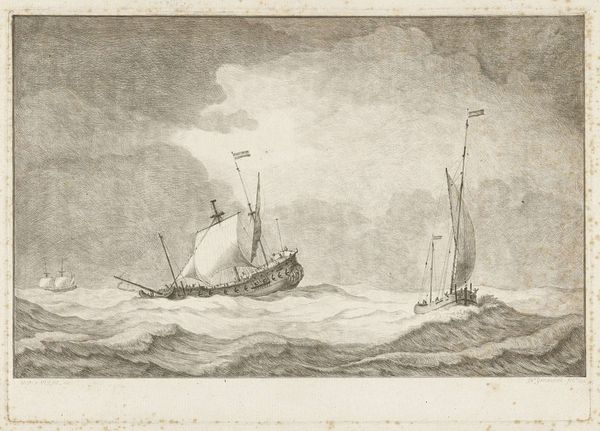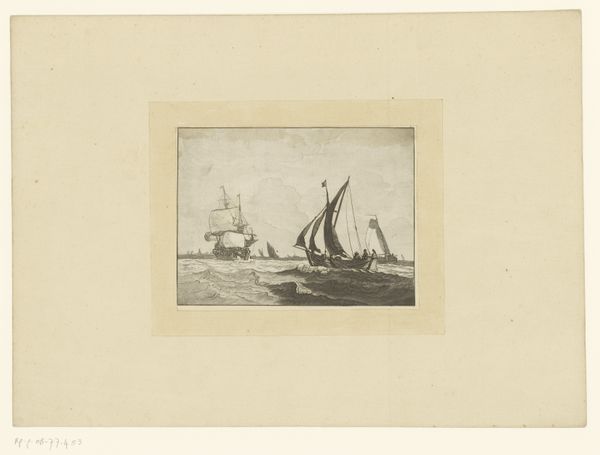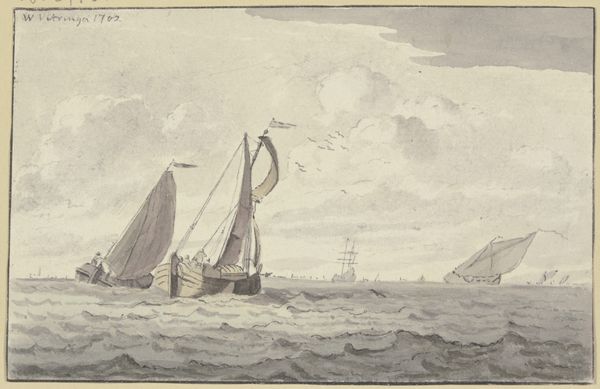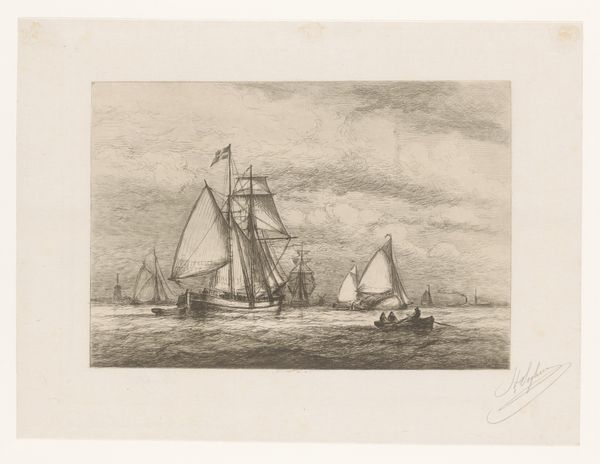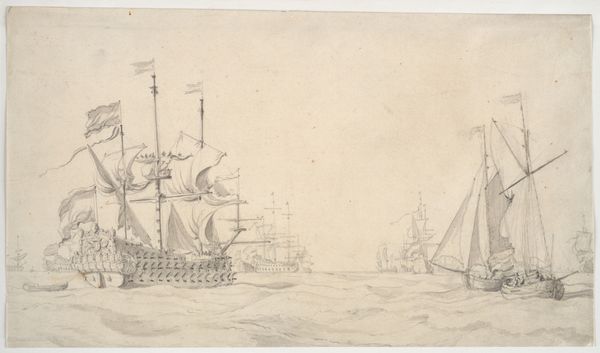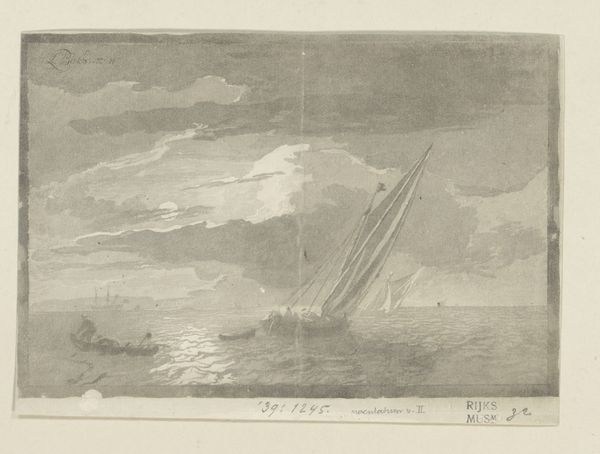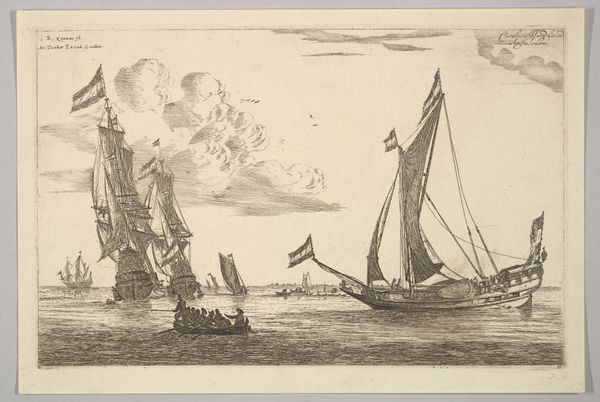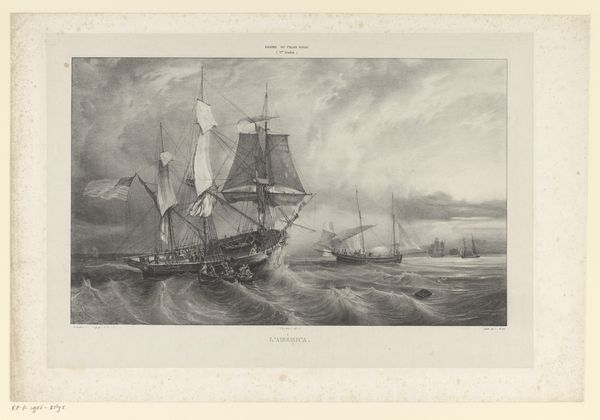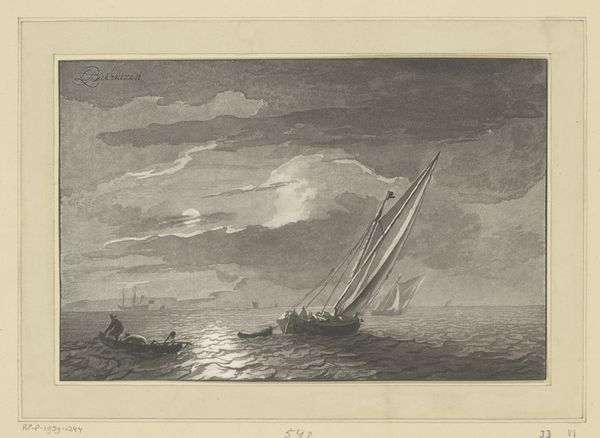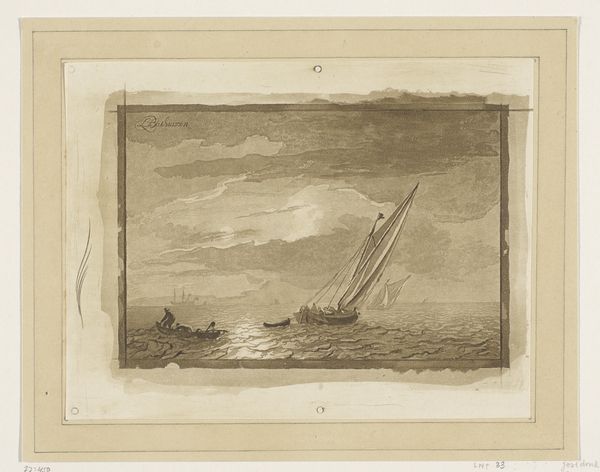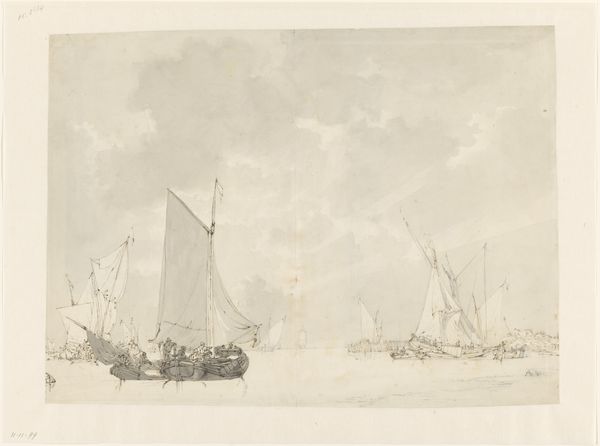
painting, watercolor
#
painting
#
landscape
#
watercolor
#
15_18th-century
#
watercolour illustration
#
rococo
Dimensions: height 194 mm, width 300 mm
Copyright: Rijks Museum: Open Domain
Editor: So, here we have John Greenwood's "Marine," likely from sometime between 1737 and 1792. It’s a watercolor painting depicting ships in choppy water. The limited palette makes it feel almost like a photograph, though it clearly isn't. What strikes you when you look at it? Curator: What interests me most is the process – how the labor invested in shipbuilding is being presented here through this somewhat detached artistic rendering in watercolor. It's a consumer product – a seascape painting, made relatively cheaply in comparison to oils, and purchased, presumably, to reflect upon other industrial and colonial activities related to the sea. Note how the craft of watercolour illustration attempts to mirror the 'high' art aesthetic of oil painting. How are the means of representation impacting the reception here? Editor: That's a compelling point about the watercolor reflecting industrial activity. So you're seeing this less as a straightforward depiction of ships and more as a commentary on maritime trade itself? Curator: Exactly. Think about the materiality. What does it mean to use this easily produced artwork to depict shipbuilding, itself a labour-intensive production activity tied directly into 18th-century imperial expansion and exploitation? The very ‘look’ of a quickly and easily produced watercolour challenges the notion of ‘fine art’. Where does that leave ‘Marine’? Editor: So the painting’s existence itself is bound to those activities? Fascinating. I’m going to look at seascapes differently now. Thank you! Curator: And I think reflecting on the painting’s material existence deepens our engagement with its cultural significance. Something to take forward with us.
Comments
No comments
Be the first to comment and join the conversation on the ultimate creative platform.
